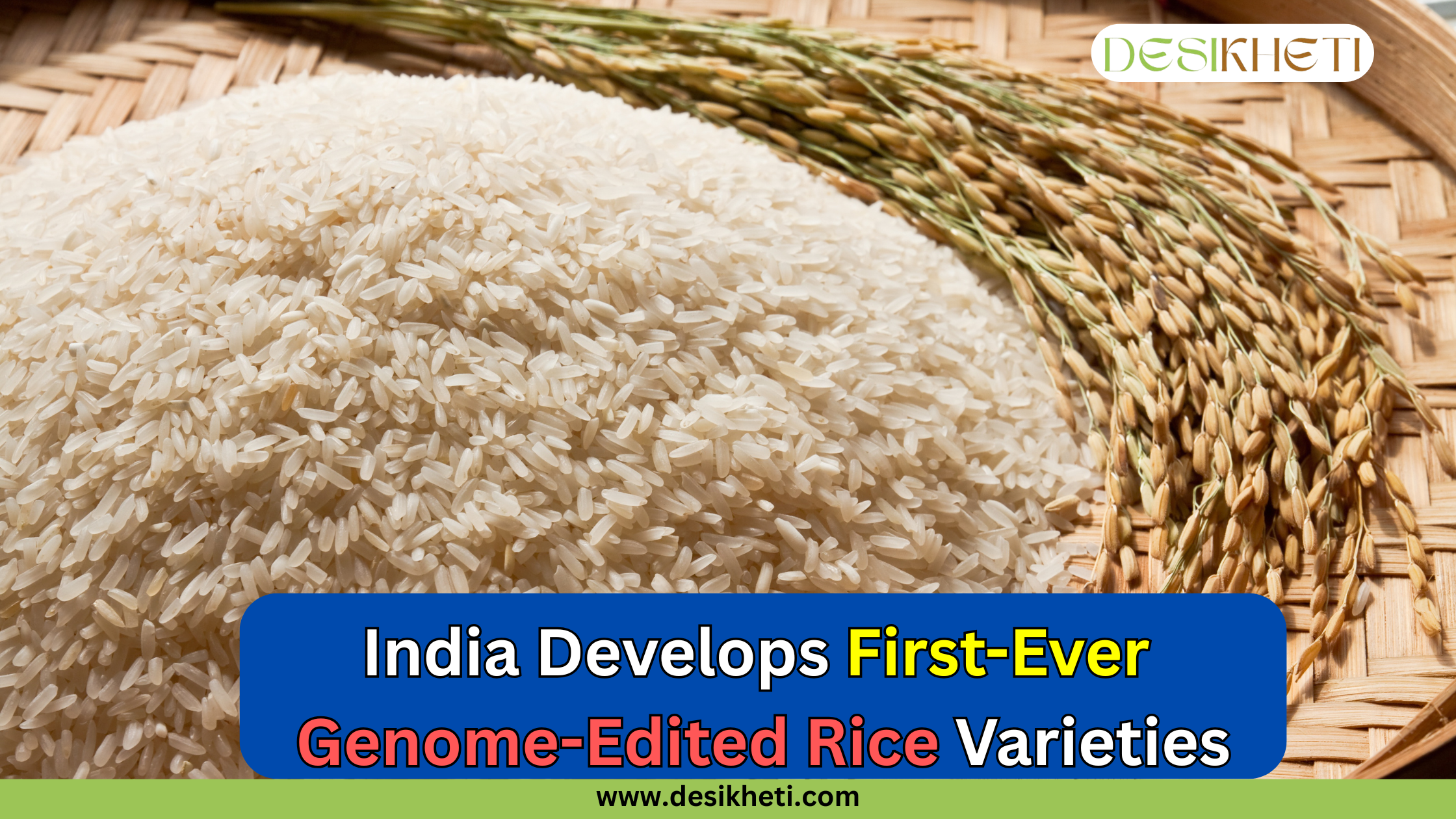India has achieved a major breakthrough in agricultural research. Union Agriculture Minister Shri Shivraj Singh Chouhan recently unveiled two new rice varieties developed by ICAR using genome editing — the first such development in the world. These new varieties can help farmers grow more crops using less water, withstand climate stress, and reduce input costs.
This marks a significant step towards the Second Green Revolution and transforming India into a global food powerhouse.
What Are the Two New Rice Varieties?
1. DRR Rice 100 (Kamala)
- Developed by: ICAR–IIRR, Hyderabad
- Based on: The popular Samba Mahsuri variety
- Features:
- Higher number of grains per panicle
- Matures 20 days earlier (~130 days)
- Stronger stalks to prevent lodging
- Similar rice quality as Samba Mahsuri
- Higher number of grains per panicle
2. Pusa DST Rice 1
- Developed by: ICAR–IARI, New Delhi
- Based on: MTU 1010 variety
- Features:
- Potential yield increase of up to 20%
- Yield improvement of 9.66% to 30.4% in saline and alkaline soils
- Potential yield increase of up to 20%
What Is Genome Editing in Agriculture?
Genome editing is a modern method where scientists make small, precise changes to a plant’s own genes — without adding any foreign DNA. This is done using CRISPR-Cas technology. It’s like improving nature’s own design to make the plant stronger, grow faster, and become more suitable for current challenges like water shortages or soil problems.
Key Benefits of the New Genome-Edited Rice Varieties
- Up to 19% higher yields
- Saves 7,500 million cubic meters of irrigation water
- Shorter crop duration – allows for multiple crops per year
- 20% reduction in greenhouse gas emissions
- Better tolerance to drought, heat, and salinity
Scientists Behind These Breakthrough Varieties
These landmark innovations are the result of years of dedicated research by ICAR scientists.
For DRR Rice 100 (Kamla):
- Dr. Satyendra Kumar Mangruthia
- Dr. R.M. Sundaram
- Dr. R. Abdul Fiyaz
- Dr. C.N. Neerja
- Dr. S.V. Sai Prasad
For Pusa DST Rice 1:
- Dr. Vishwanathan C
- Dr. Gopal Krishnan S
- Dr. Santosh Kumar
- Dr. Shivani Nagar
- Dr. Archana Vats
- Dr. Soham Ray
- Dr. Ashok Kumar Singh
- Dr. Pranjal Yadav
States Where These Varieties Can Be Grown
These rice varieties are well-suited for farmers in the following states: Andhra Pradesh, Bihar, Chhattisgarh, Jharkhand, Karnataka, Kerala, Madhya Pradesh, Maharashtra, Odisha, Puducherry, Tamil Nadu, Telangana, Uttar Pradesh, and West Bengal.
What’s Next for Indian Agriculture?
To support the future of genome editing in farming, the Government of India has allocated ₹500 crores in the 2023–24 budget. ICAR has already begun similar work on pulses, oilseeds, and other key crops.
These new rice varieties open a new path for progressive Indian farmers — helping them adopt modern techniques, increase productivity, reduce input costs, and conserve natural resources.
Join DesiKheti Whatsapp Channel for regular updates, farming tips, and information on agriculture.
